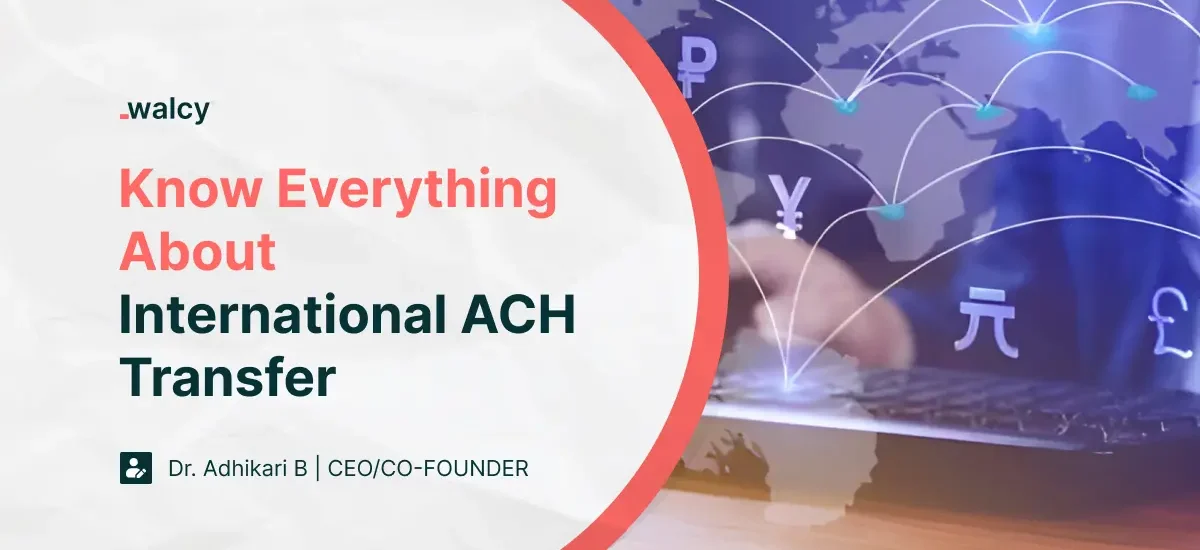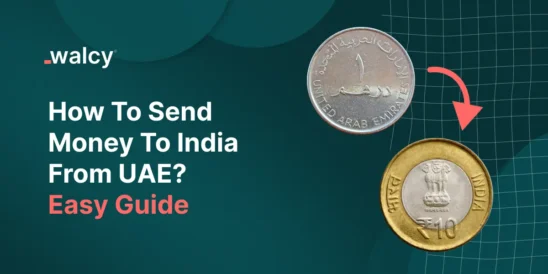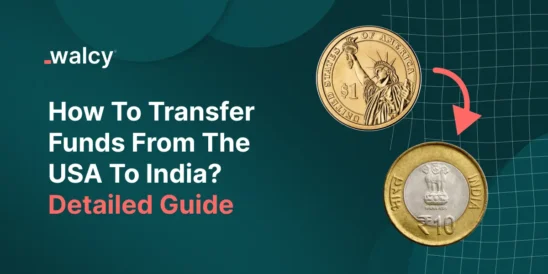Key Takeaways Of This Article
-
General Overview About International ACH Transfer
- ACH is a cost-effective, electronic funds processing network for low-value domestic transactions.
- Favored over wire payments, SWIFT, and BRICS pay for low-value transfers due to lower costs.
-
Historical Context
- The first ACH system, BACS, started in April 1968, using the net settlement method.
-
ACH in the USA
- They are used for payroll, subscriptions, unemployment payments, tax refunds, Social Security benefits, and online bill payments.
-
Types of ACH payments
- ACH Debit (pulls funds) and ACH Credit (pushes funds).
- Over 90% of Americans receive salaries, 95% receive tax returns, and 99% receive Social Security payments via ACH.
- In 2022, ACH transactions in the USA totaled over $72 trillion.
- Same-Day ACH allows for same-day settlement with a $1,000,000 transaction limit.
- The cost per ACH transaction ranges from $1 to $5.
-
International ACH Transfer Systems
- India: NACH for large-scale transactions; NEFT for one-to-one transfers.
- Singapore: eGIRO automates recurring transactions.
- UK: BACS processes bulk transactions with a three-day cycle.
- Japan: Zengin handles bulk payments and interbank transfers.
- Hong Kong: HKICL manages batch processing and real-time settlements.
- China: CNAPS supports high-value interbank transactions.
- Australia: BECS processes bulk direct-entry payments.
-
RTGS vs. ACH
- Unlike ACH’s batch processing for low-value transactions, RTGS offers near-instant, irrevocable transfers for high-value transactions.
-
Key Statistics and Developments
- In the first half of 2023, Same-Day ACH transactions reached 385.6 million, valued at approximately $613 billion.
- The ACH Network processed 14.56 billion bill payments in 2023, with B2B payments increasing by 10.5%.
-
Regulatory Oversight in the USA
-
- The Department of the Treasury and the Bureau of Fiscal Service oversee ACH network amendments to enhance efficiency and security.
Introduction
In the realm of financial transactions, ACH (Automated Clearing House) is one of the popular electronic funds transaction processing networks for local or domestic transactions usually with a low value between financial institutions involved in the transactions.
Since it is cheaper than other processing methods like wire payments, SWIFT, and BRICS pay, it deems itself appropriate for low-value transactions. Throughout the world, there are 98 identified ACH systems by the World Bank; therefore, we can discern it is a common transfer method.
Scouring the history of ACH, the very first automated clearing house was BACS previously known as Bankers’ Automated Clearing System now BACS Payment Schemes Limited, which started in April 1968. It utilized the net settlement method for operation.
In the USA, some of the common use cases for ACH are as follows:
- Recurring payments such as payroll, and subscription charges.
- Unemployment payments by the US GOV.
- Tax refunds and Social Security benefits.
- Paying online bills.
Now, let us dissect Automated Clearing House and learn what each means. Firstly, automated refers to the electronic nature of the funds processing since it digitally settles or processes funds.
Secondly, the Clearing word denotes all the steps involved from the initiation of the transaction till the settlement. Finally, house refers to a financial institution that facilitates the exchange of several types of financial transactions, namely clearances, securities, and derivative transactions.
However, the Clearing House, an adjoined word, provides a more consolidated service where two clearing firms, known as members or participating firms, sync up with the clearing house to reduce the risk of their settlement obligations.
Two Different Kinds of ACH Payments
There is a concept of push and pull funds in ACH payments which distinguishes transfers of two types:
ACH Debit Transfers or requests
These are requests for the ACH to “Pull” money from an account. It is also called an auto-bill payment. They are also called pre-authorized debit or pre-authorized payment, and once the relevant authorities are formed, the direct debit transactions are processed digitally.
For recurring payments, ACH debit transfers are favorable, however, the payee and payer agreement should determine the funds drawing dates and amounts.
ACH Credit Transfers requests
Conversely, it is initiated by the payer, and it is comprised of payments such as payrolls, direct deposits, vendor, and retail payments. It “pushes” the payment from the payer’s bank account.
Interesting Facts About The ACH Network

More than 90% of Americans receive their salary pay via the ACH network, and above 95% receive their tax returns via the ACH network, and 99% of Social Security payments are also processed via the ACH network.
According to a 2022 survey, in the United States above 72 trillion us dollars worth of funds moved through ACH networks, which is a 5% increase over the year 2021.
NACHA added a function, a new feature improvement called Same-day ACH in 2015, which is an important improvement to the ACH network that can settle transactions the same day from ODFIs to RDFIs.
Same-Day ACH has a per transaction threshold of $1000000 to improve the payment flexibility and enhance the use case of the ACH network.
Cost per payment ranges from 1$ to 5$ for both Credit and Debit and covers almost all banks in the USA.
In the first half of 2023, the number of Same-Day ACH transactions reached 6 million, marking a 14% rise.
During the second quarter alone, there were approximately 200 million such transactions, reflecting a 7.7% increase compared to the same period the previous year.
The total value of these payments was approximately $613 billion, which represents a 26.1% growth.
In 2023, ACH processed 56 billion customer-initiated bill payments and other transfers. For consumers’ convenience, bill payments due on weekends or holidays are collected on the next banking day.
The ACH Network experienced continued growth in the second quarter of 2022, processing 7.8 billion payments totaling $20 trillion. These figures represent increases of 3% in payment volume and 3% in transaction value compared to the second quarter of 2022.
Business-to-business (B2B) payments saw a significant rise, increasing by 5%.
In the 2Q 2023, the total ACH Network Volume reached 7.8 Billion transactions, where 4 billion transactions were for Debit Transfers, and Credit Transfers were 3.4 billion.
In the USA, the Department of the Treasury and the Bureau of Fiscal Service are responsible for necessary amendments to the use of the ACH network.
Also, the purpose of the ACH network is to reduce settlement risk, operational risk, and the cost per transaction, and the ACH processes the transactions in batches.
Learn about the best international business accounts for business payment.
Contrast With RTGS
Real-time Gross settlement is another electronic funds transfer method which allows near-instant transfer of funds or securities. It does not have any waiting period or batch processing.
It is a one-to-one basis processing of funds, is used for high-value transfers, and charges more fees per transfer than ACH. The processed funds are permanent and cannot be reverted or are considered irrevocable.
What Are Some Cutoff Times And Transaction Limits?

Financial institutions must provide ACH transactions in bulk, and many times within 24 hours. If one opts for the Same-Day ACH delivery feature, the process is expedited for processing on the same day.
Up to a million dollars can be transferred per transaction for the Same-Day ACH process.
International ACH Transfer Systems of Different Nations
Almost all ACH systems utilize advanced encryption algorithms and industry-standard messaging format, and transaction integrity is maintained. Apart from these some of the world’s leading ACH features are:
- India: NACH AND NEFT are the Clearing House in India.
- NACH is the centralized clearinghouse run by NPCI in India which enables huge-scale electronic transactions for Indian government agencies and Indian financial institutions. It utilizes industry standard ISO 20022 XML message standards for funds processing. The clearing duration is Transaction day plus one day.
- NEFT follows a deferred net settlement basis, NEFT allows for one-to-one electronic money transactions between people and businesses. It utilizes a structured message format and follows ISO 8583 protocol.
- As a component of Singapore’s Automated Clearing House system, eGIRO automates recurring direct debit and credit transactions. It utilizes ISO 20022 XML message standard similar to NACH. It utilizes ISO 8583 standards for transaction processing.
- United Kingdom utilizes BACS the very first clearing house in the world and uses a three-day clearing step, BACS handles bulk direct debit and credit transactions, such as bill payments and salary payroll.
- Japan’s Zengin is the primary clearing house in Japan: The Japanese Bankers Association scrutinizes the centralized processing and the processing networks of the Zengin system, which facilitates bulk payments and digital interface money transfers.
- Hong Kong HKICL: HKICL facilitates both batch processing and real-time gross settlement services. It also oversees electronic clearing and settlement for interbank transactions.
- China implements CNAPS(China National Advanced Payment System): Employs ISO 20022 messaging standards. It provides high-value, highly critical interbank transactions within China’s banking network.
- Australia’s BECS processes mass direct-entry payments, which generally include payroll and direct debit requests via a centralized system managed by AusPayNet.
Conclusion
In summary, the international ACH transfer is a popular and affordable electronic money transmission network that is preferred over more costly options like wire transfers and SWIFT for low-value domestic transactions.
Since the introduction of BACS in 1968, ACH systems—which facilitate bulk and periodic payments like wages, tax returns, and bill payments—have grown to be essential to financial operations across several nations.
Each year, ACH processes trillions of dollars worth of transactions in the USA, and new developments like Same Day ACH have made it faster and more flexible.
While ACH systems throughout the world are customized to meet the unique requirements of each country, they frequently include enhanced security features and standardized messaging formats. Finally, Global financial activities are made possible by the effective and secure operation of these networks, which are guaranteed by regulatory control.
Learn about the Global Payments and Global Accounts
Sources
Please refer to the Terms, Privacy Policy, and product availability applicable to your region, or visit the Walcy Pte. Ltd. website for the most current details about service availability, markups, payout costs, and related fees.
We do not make any express or implied representations, warranties, or guarantees regarding the accuracy, completeness, or timeliness of the content in this document.
This blog serves as general information and does not constitute legal, tax, or other professional advice from Walcy Pte. Ltd. It should not be relied upon as a substitute for consulting a financial advisor.
Do follow us on Facebook and LinkedIn, to stay connected with us.
By – Dr. Adhikari B | CEO/CO-FOUNDER for WALCY



